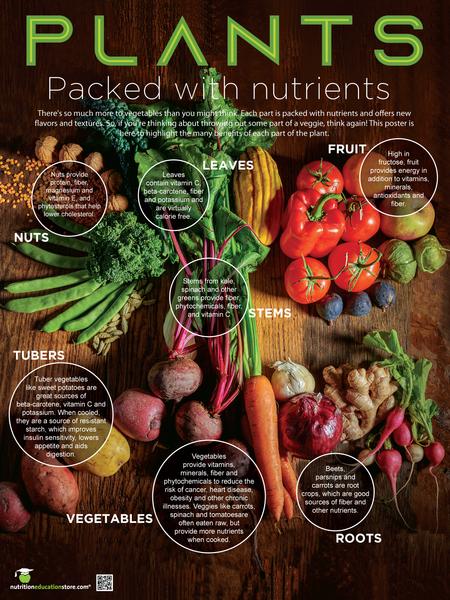Everyone knows they should eat more fruits and vegetables. Some people have even heard the term plant-based diet. But what do they think it means? To eat more kale? Walnuts? Beans? Tree bark?
If a picture is worth a thousand words, our Plant Parts bookmark says all they need to know. It features a gorgeous photo of edible tubers, roots, and bulbs; stems and leaves; fruits, vegetables, flowers, seeds/legumes, and nuts. No tree bark here!
Ask students or clients to identify each item in the picture. Chances are, they’ll realize their knowledge of plant foods is limited.
That’s where the other side of the bookmark comes in – it’s a mini-lesson on plant parts and their nutrition benefits.
We pack a lot of information in these 3-inch by 6-inch bookmarks, making them perfect for health fairs, classes, waiting rooms, and bulletin boards.
An added bonus – our Plant Parts materials send the message that all parts of the plant are edible and nutritious. So you can reduce food waste and get the benefits of a plant-based diet (without eating tree bark!).





